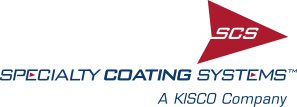SCS Blog
Recent SCS Blogs
Parylene: Making a Difference Across Many Markets
Parylene conformal coatings are used in many different industries. With their hardness, chemical inertness and ability to perfectly coat any surface, they have expanded well beyond their original military and aerospace applications. Whether it’s a protective coating for an LED or a protective shell around a coronary artery stent, the compound is found in places... Read More >>
Parylene Effectiveness at Different Thicknesses
Each conformal coating material exhibits a range of unique performance properties that determine its product uses. Relevant factors include the required coating thickness necessary to assure reliable performance. Like other coating types, Parylene (XY) layer thickness is largely a function of several factors: substrate material, the kind of assembly being covered and its operational purpose.... Read More >>
Tin Whisker Mitigation and Conformal Coating
What are Tin Whiskers? Tin whiskers are electrically conductive, crystalline structures that sometimes grow from surfaces where tin (especially electroplated tin) is used as a final finish. Tin whiskers typically grow from lengths of 1-2 mm but have been observed to lengths in excess of 10 mm. Electronic system failures have been attributed to short... Read More >>
How Fast Does Parylene Deposit?
Parylene conformal coatings combine a number of properties that are attractive for use in a wide spectrum of applications. Their low dielectric properties, high mechanical strength, transparency, bio compatibility, chemical inertness against all of the common acids, bases and organic solvents, low water/gas permeability and thermal properties make them interesting for use in many industries.... Read More >>
Can Parylene be used in direct sunlight (UV)?
Parylene can be used outdoors, however, most Parylene variants have one drawback that could limit its suitability in some outdoor applications: sunlight can cause it to turn yellow. With this in mind, product designers specifying a coating for a product to be used where it will be subject to sunlight should carefully consider the coatings... Read More >>
Is Parylene Safe?
Parylene application involves utilizing a vapor deposition polymerization (VDP) process implemented under a vacuum. Unlike wet coating application methods – brushing, dipping, spraying, etc. – Parylene VDP is not line-of-sight. Because the gaseous monomer envelopes all sides of the assembly being coated, appropriate process control allows vacuum deposition of a uniquely conformal coating, one that... Read More >>
Parylene and A-174 Silane
Improving Parylene Adhesion Parylene provides an entirely conformal, durable, pinhole-free substrate coating of extreme utility for an exceptional range of materials, products and purposes. Despite its many advantages, Parylene’s chemical structure can actually interfere with the reliable interface adhesion required for optimal performance. The chemical vapor deposition (CVD) process that generates so many of Parylene’s... Read More >>
Does Parylene Get Everywhere?
Following thorough research, Parylene emerged as the optimal conformal film for your application. Its consistent protective and insulating properties are particularly noteworthy, catering to a wide array of applications, from printed-circuit boards (PCBs) to medical implants to military-grade uses. In addition to these benefits, Parylene offers: Applied through a chemical vapor deposition (CVD) process, gaseous... Read More >>
How to Choose Between Potting and Conformal Coating
When safeguarding printed circuit boards (PCBs), manufacturers often turn to potting or conformal coating. The choice between the two depends on the PCB’s intended use and the level of protection needed. While potting provides a sturdy shield, it comes with operational drawbacks that can outweigh its advantages. On the other hand, conformal coatings create a... Read More >>
Parylene vs Teflon™
Plastics and polymers were first being produced, whether on accident or on purpose, in the early 1930s. Dupont’s Teflon™, or PTFE, is probably the most widely known polymer because of its uses in cooking as a non-stick coating for pots and pans. While there are lots of other polymers out there, there are only a... Read More >>

